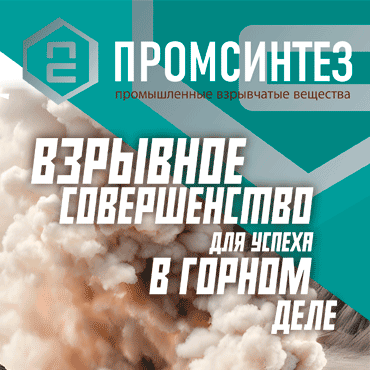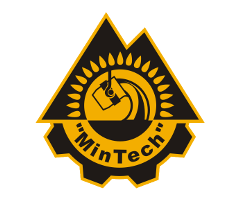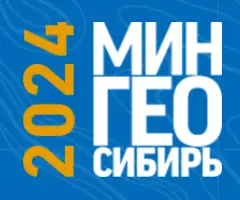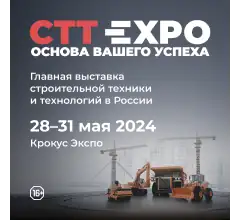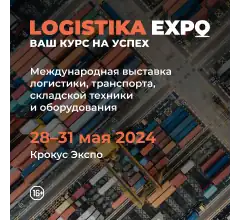Automation of seismic events classification during seismic monitoring at a coal mine using machine learning
![]() K.V. Romanevich, S.N. Mulev
K.V. Romanevich, S.N. Mulev
Research Institute of Mining Geomechanics and Mine Surveying – Interdisciplinary Research Center “VNIMI”, St. Petersburg, Russian Federation
Russian Mining Industry №5S / 2023 р. 58-64
Abstract: The paper is dedicated to the development of an algorithm for automatic classification of geodynamic processes in the context of monitoring seismic activity in mines using machine learning methods. The importance of classifying geodynamic processes is noted in terms of understanding the nature of seismic phenomena, identifying their sources, assessing the potential hazard as well as their impact on the environment and the infrastructure of underground structures. The paper describes an algorithm for analyzing seismic activity based on the data obtained as the result of recording seismic events using the hardware complex and the GITS2 seismic monitoring software in a coal mine. The paper briefly examines the key artificial intelligence methods used to control and predict hazardous geodynamic phenomena. Particular attention is paid to the development of a machine learning model based on decision trees that demonstrates high accuracy in classifying seismic events. The classification accuracy of the developed model is 98,39% on the training set and 98,41% on the test set. This result indicates the high generalization ability of the model on new data and the absence of overfitting. Testing the algorithm on new data entering the system also confirms the high accuracy in classification of seismic event types with the level of 83–93%. This highlights the efficiency of machine learning methods in mine seismic control. After its trial operation, the developed machine learning model will be implemented in the GITS2 monitoring system, that will allow classification of the incoming seismic events in automatic mode.
Keywords: mine, seismic events, seismic monitoring, artificial intelligence methods, machine learning, classification algorithm, decision trees, Catboost
For citation: Romanevich K.V., Mulev S.N. Automation of seismic events classification during seismic monitoring at a coal mine using machine learning. Russian Mining Industry. 2023;(5S):58–64. https://doi.org/10.30686/1609-9192-2023-5S-58-64
Article info
Received: 31.10.2023
Revised: 22.11.2023
Accepted: 27.11.2023
Information about the authors
Kirill V. Romanevich – Cand. Sci. (Eng.), Leading Research Associate, Research Institute of Mining Geomechanics and Mine Surveying – Interdisciplinary Research Center “VNIMI”, St. Petersburg, Russian Federation; e-mail: This email address is being protected from spambots. You need JavaScript enabled to view it.
Sergey N. Mulev – R&D Director, Research Institute of Mining Geomechanics and Mine Surveying – Interdisciplinary Research Center “VNIMI”, St. Petersburg, Russian Federation; e-mail: This email address is being protected from spambots. You need JavaScript enabled to view it.
References
1. Romanevich K.V., Mulev S.N. Application of machine learning methods for analyzing electromagnetic radiation data during rock deformation. In: Digital technologies in mining: Abstracts of reports of the All-Russian scientific and technical conference, June 13– 16, 2023. Apatity: Mining Institute Kola Science Centre of the Russian Academy of Sciences; 2023, pp. 53–55. (In Russ.) https://doi.org/10.37614/978.5.91137.491.4
2. Razumov E.E., Rukavishnikov G.D., Mulev S.N., Prostov S.M. Basic principles for building seismic monitoring systems in rockburst-hazardous coal seam mining. Gornyi Zhurnal. 2021;(1):8–12. (In Russ.) https://doi.org/10.17580/gzh.2021.01.02
3. Rukavishnikov G.D., Mulev S.N., A. Gavrilov G. Experience of application and prospects for the development of the GITS seismic monitoring system at the Tashtagolsky iron ore deposit. Russian Mining Industry. 2023;(1 Suppl.):90–95. (In Russ.) https://doi.org/10.30686/1609-9192-2023-S1-90-95
4. Razumov E.E., Rukavishnikov G.D., Klimko V.K. Geophysical forecast of impact hazard during mining operations. In: Kostikov K.S. (ed.) Young Russia: Materials of the 13 All-Russian scientific and practical conference with international participation, Kemerovo, April 20–23, 2021. Kemerovo: T. F. Gorbachev Kuzbass State Technical University; 2021, pp. 10908.1–10908.6. (In Russ.) Available at: https://science.kuzstu.ru/wp-content/Events/Conference/RM/2021/RM21/pages/Articles/010908.pdf
5. Di Y., Wang E. Rock burst precursor electromagnetic radiation signal recognition method and early warning application based on recurrent neural networks. Rock Mechanics and Rock Engineering. 2021;54(3):1449–1461. https://doi.org/10.1007/s00603-020-02314-w
6. Qiu L., Li Z., Wang E., Liu Z., Ou J., Li X. et al. Characteristics and precursor information of electromagnetic signals of mining-induced coal and gas outburst. Journal of Loss Prevention in the Process Industries. 2018;54:206–215. https://doi.org/10.1016/j.jlp.2018.04.004
7. Zhang J. Exploration on coal mining-induced rockburst prediction using Internet of things and deep neural network. The Journal of Supercomputing. 2022;78(12):13988–14008. https://doi.org/10.1007/s11227-022-04424-4
8. Di Y., Wang E., Li Z., Liu X., Huang T., Yao J. Comprehensive early warning method of microseismic, acoustic emission, and electromagnetic radiation signals of rock burst based on deep learning. International Journal of Rock Mechanics and Mining Sciences. 2023;170:105519. https://doi.org/10.1016/j.ijrmms.2023.105519
9. Li X., Chen S., Wang E., Li Z., Rockburst mechanism in coal rock with structural surface and the microseismic (MS) and electromagnetic radiation (EMR) response. Engineering Failure Analysis. 2021;124:105396. https://doi.org/10.1016/j.engfailanal.2021.105396
10. Huang L., Li J., Hao H., Li X. Micro-seismic event detection and location in underground mines by using Convolutional Neural Networks (CNN) and deep learning. Tunnelling and Underground Space Technology. 2018;81:265–276. https://doi.org/10.1016/j.tust.2018.07.006
11. Pu Y., Apel D.B., Liu V., Mitri H. Machine learning methods for rockburst prediction-state-of-the-art review. International Journal of Mining Science and Technology. 2019;29(4):565–570. https://doi.org/10.1016/j.ijmst.2019.06.009
12. Hancock J.T., Khoshgoftaar T.M. CatBoost for big data: an interdisciplinary review. Journal of Big Data. 2020;7:94. https://doi.org/10.1186/s40537-020-00369-8
13. Ibrahim A.A., Raheem R.L., Muhammed M.M., Abdulaziz R.O., Ganiyu S.A. Comparison of the CatBoost classifier with other machine learning methods. International Journal of Advanced Computer Science and Applications. 2020;11(11):738–748. https://doi.org/10.14569/IJACSA.2020.0111190



